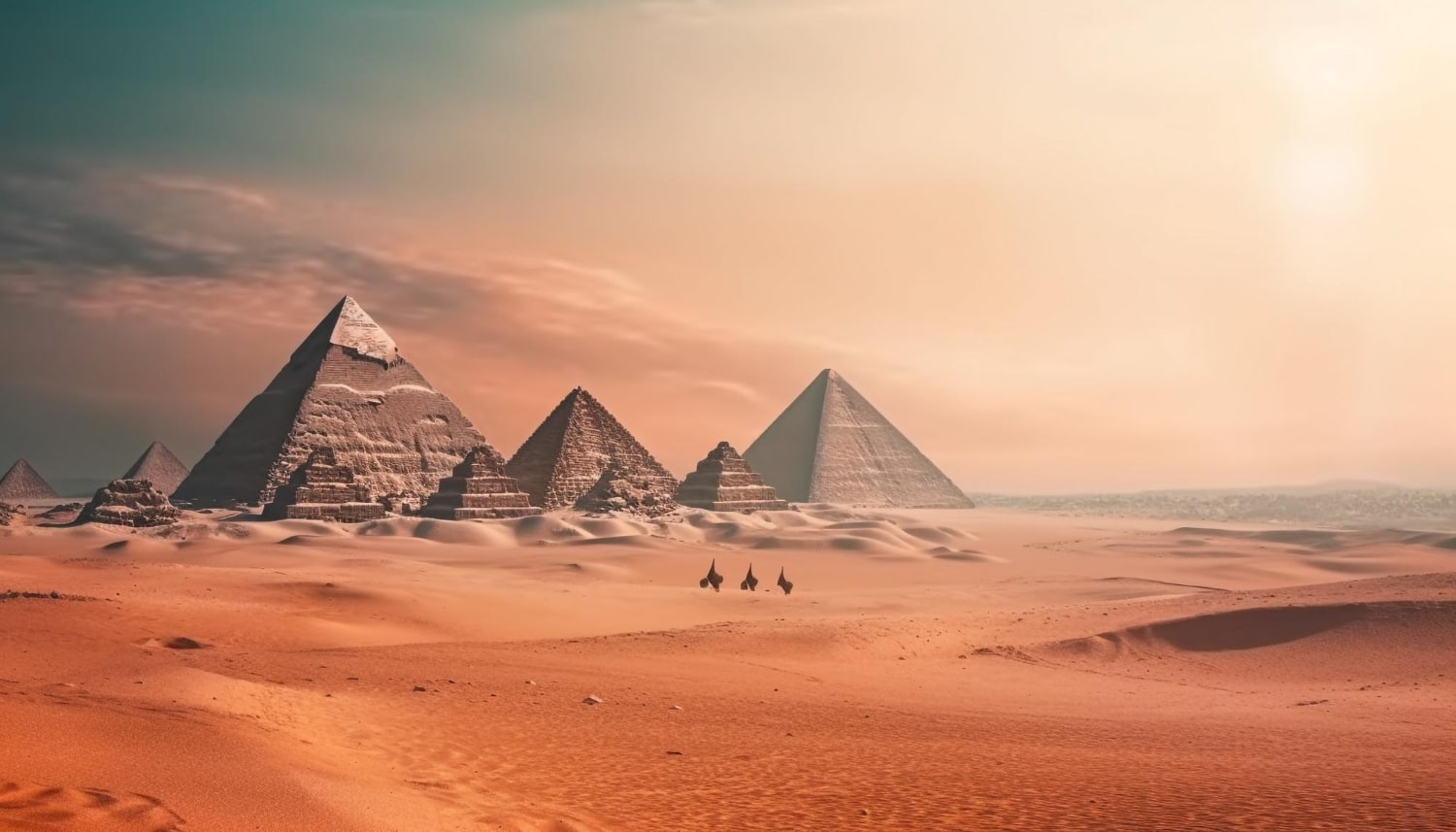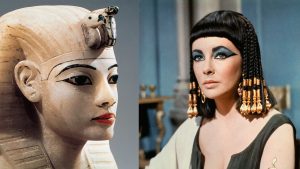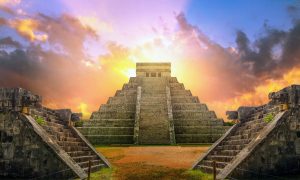
57 interesting facts about pyramids
- 👁️ 1043
The ancient pyramids, primarily found in Egypt, are one of the most enigmatic and fascinating architectural marvels in the world. These structures, mainly built during the Old and Middle Kingdom periods, served as tombs for pharaohs, their consorts, and other esteemed officials. The most famous pyramids are the three Pyramids of Giza, including the Great Pyramid, one of the Seven Wonders of the Ancient World. These colossal monuments reveal the ancient Egyptians’ ingenuity and their profound understanding of astronomy, architecture, and engineering. Here’s a comprehensive list of 57 intriguing facts about these timeless structures:
- There are over 138 pyramids discovered in Egypt so far.
- The Great Pyramid of Giza was originally 146.6 metres (481 feet) tall and remained the tallest man-made structure for over 3,800 years.
- The pyramids were built as tombs for Pharaohs and their queens.
- The Great Pyramid is estimated to consist of 2.3 million blocks, weighing an average of 2.5 to 15 tons each.
- The base of the Great Pyramid covers 13.1 acres, and each side is greater than 5 acres in area.
- The Great Pyramid is aligned with incredible precision to the true north.
- The ancient Egyptians used a straight ramp to transport the heavy stones, not a zigzagging one as often depicted.
- The pyramids were originally covered with casing stones made of highly polished Tura limestone to reflect the sun.
- The Great Pyramid was originally white and shiny, as the casing stones reflected the sun’s light.
- Many of the casing stones were reused in other construction projects in Cairo over the centuries.
- Contrary to popular belief, the pyramids were not built by slaves, but by skilled workers.
- The workers were well-fed, with an estimated 21 cattle and 23 sheep sent to them daily.
- The construction of the Great Pyramid likely took around 20 years to complete.
- The three Pyramids of Giza are precisely aligned with the stars in Orion’s belt.
- The ancient Egyptians had no knowledge of the wheel during the construction of the early pyramids.
- Inside the pyramids, narrow shafts are aligned with certain stars, possibly used for religious reasons.
- The temperature inside the Great Pyramid remains relatively constant at around 20 degrees Celsius (68°F), the average temperature of Earth.
- The Great Sphinx is part of the Giza pyramid complex, although its true age remains a mystery.
- The pyramids were originally named after the pharaohs who had them built, using the formula “The pyramid of…” followed by the king’s name.
- The word ‘pyramid’ likely derives from the Greek term ‘pyramis,’ which means ‘wheat cake,’ possibly referring to the shape of the structures.
- Most pyramids were robbed of their treasures during antiquity; the first completely intact tomb discovered was that of Tutankhamun.
- Khufu, also known as Cheops, was the Pharaoh who ordered the construction of the Great Pyramid.
- The Bent Pyramid at Dahshur represents a transitional form between step-sided and smooth-sided pyramids.
- Some pyramids contain texts known as “Pyramid Texts,” ancient religious texts carved into the walls.
- Not all pyramids were successful; the pyramid at Meidum collapsed due to structural failure.
- Most pyramids have a north-facing entrance, as the north was associated with the region of the dead in ancient Egyptian mythology.
- A mortar used in the Great Pyramid’s construction has been analyzed and found to be made mostly of gypsum.
- Many pyramids had a polished, highly reflective surface, making them sparkle in the sun.
- The pyramids were one of the first structures to implement above-ground burial.
- The Bent Pyramid at Dahshur has two internal chambers, unlike other pyramids of its time.
- The Red Pyramid, also at Dahshur, is the largest of the three major pyramids located at the Dahshur necropolis.
- The step pyramid of Djoser, built during the 27th century BC, is considered the earliest colossal stone building in Egypt.
- The oldest pyramid texts date back to the Pyramid of Unas, built during the 24th century BC.
- The Great Pyramid’s swivel door, weighing about 20 tons, was so well-balanced it could be opened from the inside.
- Some pyramids had false doors to mislead potential tomb robbers.
- Queen Hatshepsut, one of Egypt’s female pharaohs, had her own pyramid at Deir el-Bahari.
- The Great Pyramid was initially sealed, but the original entrance was forced open, creating a tunnel now known as the Robbers’ Tunnel.
- An estimated 100,000 workers were involved in the construction of the Great Pyramid.
- The workers who built the pyramids lived in nearby workers’ villages.
- The Great Pyramid’s original casing stones are mostly gone, but a few can still be seen near the base.
- The burial chamber of the Great Pyramid is called the King’s Chamber and contains a red granite sarcophagus.
- Pyramids were often part of a complex including temples, courtyards, and chapels.
- The world’s oldest paved road led to the site of the Great Pyramid and was used to transport materials.
- Some ancient Egyptian pyramids were constructed as step pyramids but were later transformed into true pyramids.
- Imhotep, the ancient Egyptian polymath, is credited with designing the step pyramid of Djoser.
- Many pyramids were built on the west bank of the Nile, symbolically associated with the realm of the dead.
- The Great Pyramid’s base is horizontally level to within just 2.1 cm (0.83 inches).
- The ancient Egyptians did not record the methods they used to build the pyramids, leading to much speculation and debate.
- The oldest graffiti in the world, dating back to 3,000 years ago, was found in the pyramid complex of Giza, possibly left by workers.
- The Great Pyramid was built with enough stone to build a wall 3 metres (10 feet) high and 0.3 metres (1 foot) thick, surrounding France.
- Some archaeologists believe that a straight or zig-zagging ramp was used for the construction of the Great Pyramid, while others propose a circular ramp that spiraled up the structure.
- The Giza Plateau is not only home to the Great Pyramids but also several cemeteries, industrial complexes, and workers’ villages.
- The original burial chamber of the Great Pyramid was abandoned during construction in favor of a new chamber.
- Some pyramids had temples attached to them for the worship of the pharaoh as a deity.
- A unique underground pyramid, the Hypogeum of Ħal-Saflieni in Malta, is a subterranean structure dating back to 4000 BC.
- The Great Pyramid is more accurately aligned with the cardinal compass points than the modern Meridian Building in Greenwich, London.
- The Pyramid of Menkaure at Giza was once attacked with heavy battering rams by an Arab army, but the force gave up after eight months, barely making a dent.
The pyramids stand as a testament to the ancient Egyptians’ exceptional skill, creativity, and understanding of various disciplines. These monumental structures continue to perplex scholars and enthusiasts alike, inspiring ongoing research and exploration. Their enigmatic nature, architectural brilliance, and alignment with celestial bodies continue to captivate and draw millions of visitors each year. The pyramids, especially the iconic ones at Giza, remain an unmissable window into ancient civilization and a remarkable legacy of human achievement.











